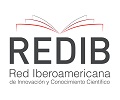Productive performance and ruminal development in dairy kids fed with different diets and slaughtered at different ages.
DOI:
https://doi.org/10.14409/favecv.v18i1.8244Keywords:
goat, production, feed, dairyAbstract
The aim of this work was to evaluate performance and ruminal development of dairy kids fed with different diets (alfalfa and / or grains: Alf, Alf + Gr, Gr) and slaughtered at different ages (50, 60 and 70 days of life). Parameters evaluated were: daily live weight gain (GDPV), slaughter weight (PF), hot carcass weight (PCC), slaughter yield (RF), stomach weight and ruminal papillae length (LP). Animals were assigned by random in the treatments: Alf 50 (n=3), Alf 60 (n=4), Alf 70 (n=3), Gr 50 (n=3), Gr 60 (n=4), Gr 70 (n=3), Alf+Gr 50 (n=3), Alf+Gr 60 (n=4), Alf+Gr 70 (n=3). Data were analyzed with linear mixed model according to a repeated measures design by ANOVA of Infostat 2018 program. Means multiple comparisons were evaluated by LSD-Fisher test (P = 0.05). No interaction was detected for diet and slaughter age. Regarding diet, animals that consumed Alf and Alf + Gr presented higher GDPV (p = 0.0022). FP and PCC were higher for Alf + Gr than for Gr group (p = 0.0352 and p = 0.0298). RF was higher for the Gr group than for the others (p <0.0001). Age at slaughter affected PF and PCC, animals with 70 days had the highest values (p= 0.0002 and p= 0,0008). 50 days old kids had the maximum RF (p=0.0413). Rumen weight was higher for group 70 compared with groups 60 and 50 (p=0.0410). LP was similar for all treatments. It is possible to conclude that diet and age affected the productive performance of animals.
Downloads
Published
How to Cite
Issue
Section
License
FAVE Sección Ciencias Veterinarias ratifies the open access model, in which contents (in full) are available free to anyone in the internet. The costs of production and publication are not transfered to the authors. This policy intends to break social and economical barriers that generate inequities in the access to information, and for the publication of research results.
All articles can be accessed at http://bibliotecavirtual.unl.edu.ar/publicaciones/index.php/FAVEveterinaria/issue/current/, under license Creative CommonsAtribución-NoComercial-Compartir Igual 4.0 Internacional.










